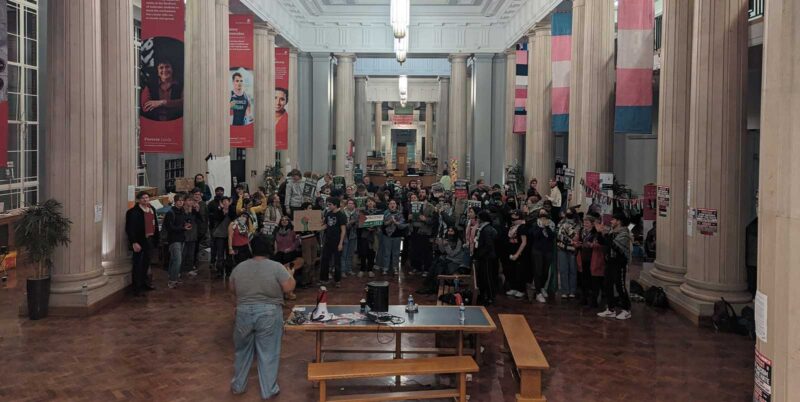Revolutionary women: Clara Zetkin
We continue our series on revolutionary women with a look at the great German socialist Clara Zetkin pioneer of the struggle for women’s liberation, writes Natalie Sedley
 Clara Zetkin, born in 1857, was a key figure in the world’s first mass socialist party, the German Social Democratic Party (SPD), where she fought for the cause of women’s rights.
Clara Zetkin, born in 1857, was a key figure in the world’s first mass socialist party, the German Social Democratic Party (SPD), where she fought for the cause of women’s rights.
Then, as today, women earned less than men, but without today’s equal pay laws. Women had very few rights. Divorce was restricted; men owned women’s property and women couldn’t vote.
Zetkin had to overcome the resistance of the party’s male leaders, to make it the first in the world to demand rights for women workers in 1891. She launched a newspaper for women called Gleicheit (Equality), with the subtitle “for the interests of working women.”
In the 1880s and 1890s, industry spread across Germany, drawing hundreds of thousands of women into the factories. The SPD became a mass party with a huge membership, but women were banned from joining political parties or trade unions.
Fighting the ban
Zetkin set up a special organisation for working class women, which remained important even after the ban was lifted in 1908. Women faced a double burden of work in the factory and housework at home. They often faced domestic violence in the family. Even in the SPD they were often not taken seriously.
Zetkin was not just an organiser, but also great thinker and writer. Building on the works of Marxists like Frederick Engels and August Bebel, she argued that socialism was the only way to win genuine women’s liberation, and that a socialist revolution would be impossible without involving women in the struggle against capitalism.
Like the Russian socialist Alexandra Kollontai, Zetkin took care to distinguish this struggle from the women’s movement that had been launched by women from the capitalist class. Many of these bourgeois feminists wanted to extend the vote only to women who owned property.
Zetkin warned that these women were “enemy sisters”. She was soon proved right when they refused to support struggles for laws protecting women at work, rather like many feminists today, who are all for more female company directors, but who don’t support women workers when they strike to defend their jobs and pay.
Women’s international struggles
Zetkin made the struggle for women’s rights international. In 1907 she organised the first International Conference of Socialist Women, attended by delegates from 15 countries, to coordinate the struggle for the vote and build mass socialist women’s organisations worldwide.
At the second conference in 1910, she called for an International Women’s Day. In March the following year, rallies in Austria, Denmark, Germany and Sweden were attended by over a million workers, under the slogan: “The vote for women will unite our strength in the struggle for socialism.”
This all took place as part of a worldwide socialist movement, united in a single organisation: the Second International. But tragically, the Second International fell apart with the outbreak of the First World War in 1914, when the leaders of the SPD and its other national parties supported their “own” capitalist governments in war.
Zetkin stood up against nationalist hatred, together with revolutionaries like Rosa Luxemburg and Karl Liebknecht. Their tiny grouping bravely opposed the war, and denounced the SPD leaders for betraying the international working class by supporting the slaughter.
This movement grew as the horrors of war hit home. After 1919 Zetkin became a leader of the newly founded Third International and the leader of its communist women’s organisation.
In the 1920s and 1930s, Zetkin saw that Germany was in a revolutionary period and that the Communists needed to struggle for power. She called for a united front of all the workers’ parties in the fight against the threat of fascism and for a workers’ government. She stressed that the working class would only be able to stop the middle classes from going over the fascism if it came forward itself as a force that all could see was willing and ready to take over and rule:
“The signs of disintegration, which are before our eyes, give us the conviction that the giant proletariat will again join in the revolutionary fray, and that its call to the bourgeois world will be: I am the strength, I am the will, in me you see the future!”
Zetkin remains an inspiration to socialists today. She showed how socialists need to fight for the rights of women even within their parties and unions, how the unity of the women and men of the working class has to be fought for every day, and how millions of working class women can be rallied to take their place alongside men in the fight for socialism.
• Read Clara Zetkin’s writings at Marxist Internet Archive



